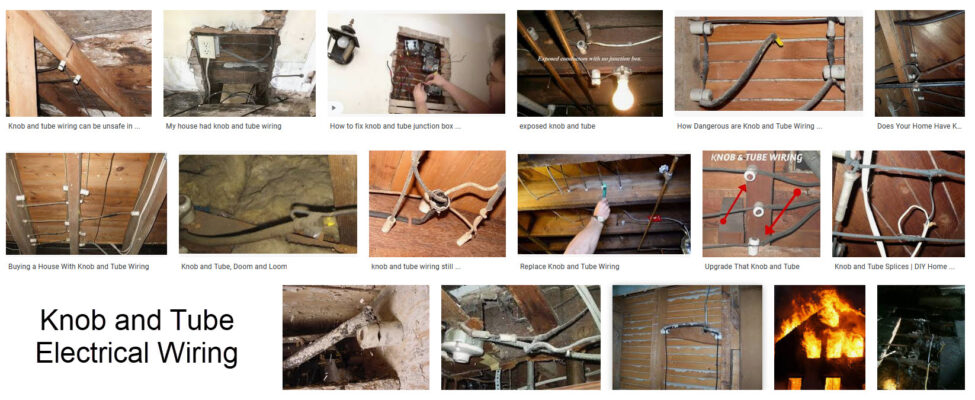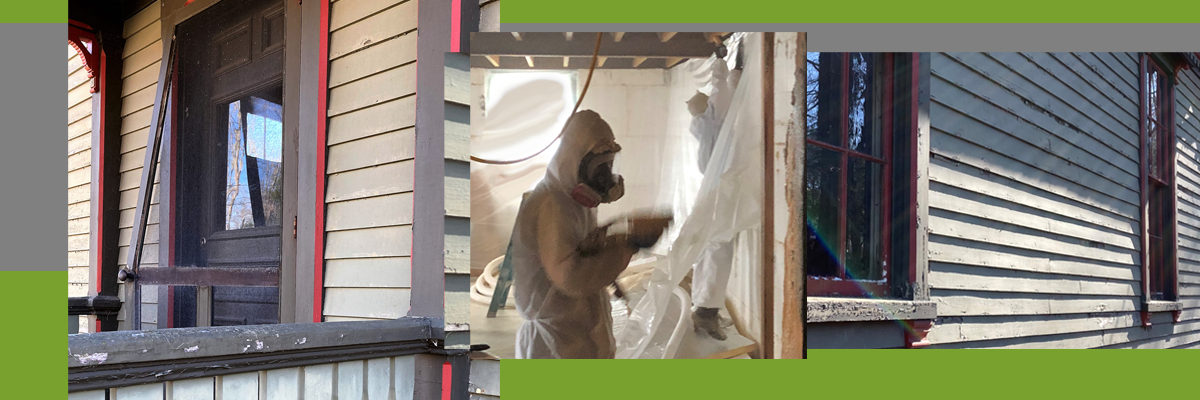by Steve Cowell
Weatherization is in the news more than ever, with infrastructure funds coming and with state and federal legislation proposed to improve buildings.
Funding is necessary, but not sufficient, to solve our nation’s crisis in substandard housing. We absolutely need smart strategy. If we do not apply funds quickly and effectively, this opportunity could turn into its own crisis. This is what keeps me up at night.
Help for Walkaways
Weatherization is enormously useful. But what happens when older homes are ineligible for program weatherization due to health and safety issues, or structural defects? (For example, it is senseless to insulate an attic if a roof is leaking. And energy efficiency workers are prohibited from installing approved measures in a dwelling with dangerous outdated wiring.)

Neglected repairs or structural issues, the presence of pests, mold, asbestos or outdated wiring can mean costly work is required prior to a home being accepted for weatherization program funds. Some states and utility programs offer “pre-weatherization” funds, but expansion is needed.
If a homeowner cannot afford to fix longstanding problems, they are unintentionally excluded from access to programs that save energy and lower energy bills. These vulnerable populations are turned away, and the program implementers have to walk away. How can we prevent this from happening, and serve more people who need help to become resilient?
The magnitude of this challenge . . . is significant.
The magnitude of this challenge — “walkaways” a.k.a. “deferrals” — is significant. Nationally, 10-30% of income-eligible weatherization clients are deferred. (The Weatherization Assistance Program has determined that certain repairs must be made by the owner prior to receiving services.) Unfortunately homeowners often lack the resources to make these upgrades.
Program denial due to health and safety issues is highest in eastern cities with older housing stock, like Philadelphia (where 55-65% of households are turned away). And the percentage is increasing.
Barriers to weatherizing homes can be so daunting that few people even try to tackle the most needy homes. Yet bold new ideas can make a difference. And perseverance matters — both for families and for communities who stand to benefit from safe, resilient housing that enables sheltering-in-place during power outages.
“Addressing low-income community needs, not just the house-by-house issues, is the ultimate need to improve the neighborhoods” –Jeff Genzer, General Counsel, National Association of State Energy Officials
Funding and Innovation: Can 2022 Be a Transformational Year for Deferrals?
As you likely know, significant federal funding is coming for weatherization. I am grateful that lawmakers are finally understanding the need, and the power of this solution.
Many northeastern states use LIHEAP funds for repairs that need to be made to a home before it can be weatherized. State, regional, and philanthropic funds all add to options.

Many states used LIHEAP funds for weatherization in 2019. Sources: Weatherization Barriers Toolkit (E4TheFuture 2022) and Weatherization and LIHEAP, US Department of Energy and Health and Human Services March 2021.
Funding options are detailed in E4TheFuture’s new Weatherization Barriers Toolkit: How to Address Health and Safety Barriers with an Income-Eligible Focus. In addition to American Rescue Plan Act (ARPA) and Infrastructure Investment and Jobs Act (IIJA), federal sources include the Low-Income Home Energy Assistance Program (LIHEAP) and a U.S. Department of Energy “Weatherization Readiness Fund” we look forward to hearing more about soon.
New Case Study: Lessons Beyond Connecticut
I am proud of E4TheFuture’s new resource, the Weatherization Barriers Toolkit.
It includes a case study that details how Connecticut developed an approach to deal with its high deferral rate, and shows how states might use available funding to address barriers.
In the Toolkit you will find guidance, lessons learned, and resources useful for any state. It’s a starting point for:
—Energy, environmental and equity advocates
—Weatherization/efficiency program implementers, funders, administrators
—and more
The new Toolkit is linked from Vox (4/17/22): How to fight the affordable housing and climate crises at once – It’s all about the energy bills. From the article:
“Issues like lead paint, leaky roofs, and knob-and-tube wiring don’t just leave tenants and homeowners in substandard, unsafe housing. They also leave families — mostly poor families — shut out from energy efficiency programs the federal government already funds to upgrade homes.”
Leticia Colon de Mejias — a Connecticut stakeholder, environmental leader and business owner — is a persistent advocate for positive change. I will close with her argument for why it is critically important that any strategies and funding to assist low-income homeowners use less energy, emit less carbon and result in healthier, safer homes and more resilient communities:
1. Working families and low-income families, in 1-4 unit housing, are struggling. They cannot afford to remove mold, asbestos, outdated wiring, or address major leaks or flood damage.
2. If we are to say the word ‘equity’ and mean it, we must focus on and properly fund the removal of barriers to equal access to energy savings and carbon reducing programs.
3. Funding must be broad, and the process must be well communicated to at-risk working families. Inclusion in workforce models that train underrepresented communities is crucial. Representation matters.
I strongly agree!
Let me know if you would like to collaborate on the effort to bring more voices into this conversation. Contact us.
–Steve Cowell is President of E4TheFuture
